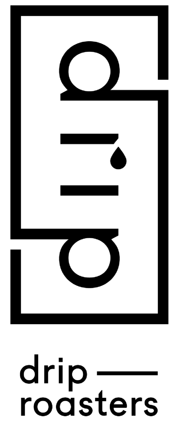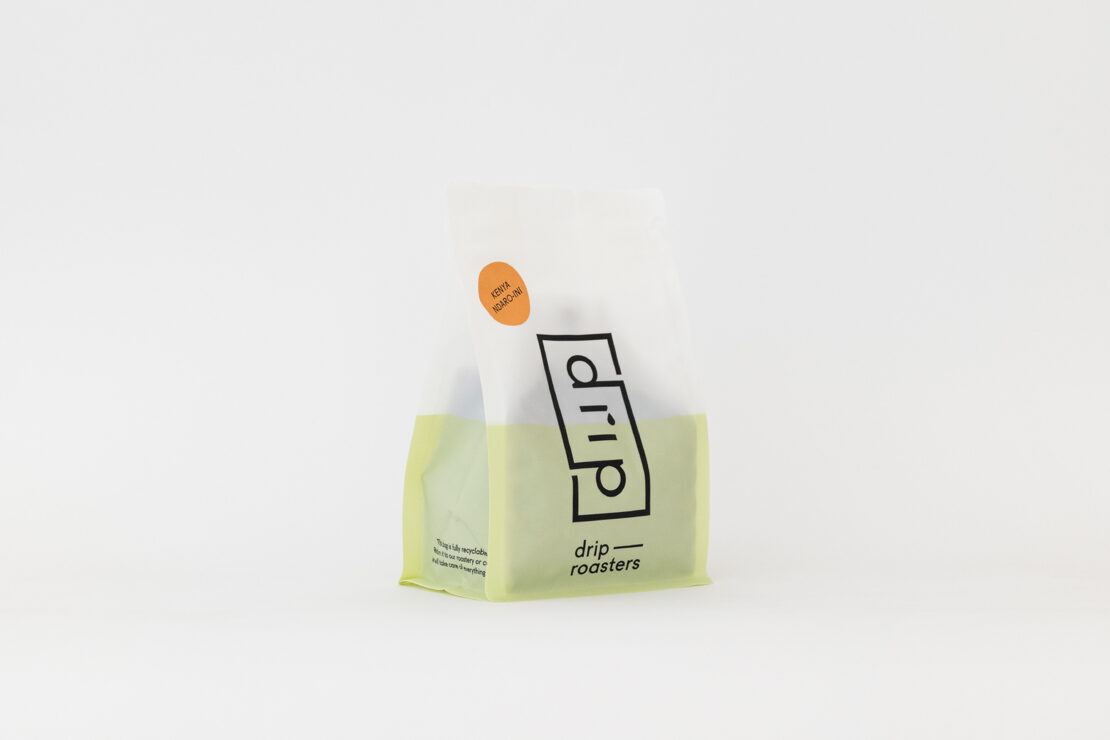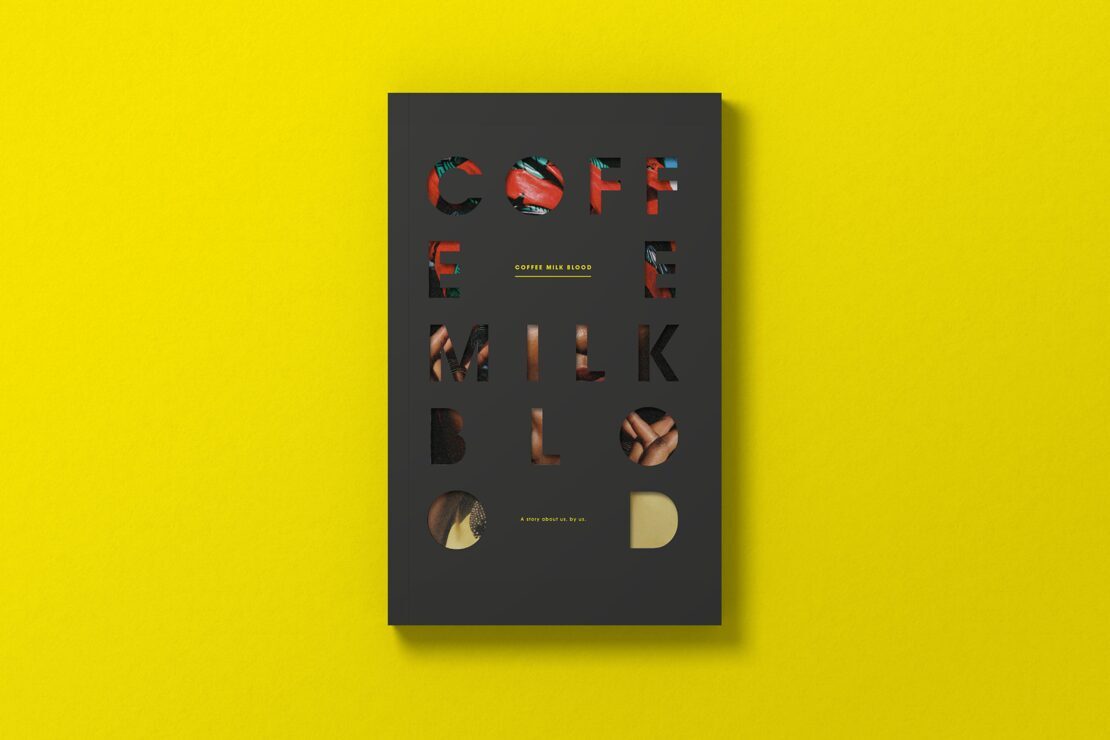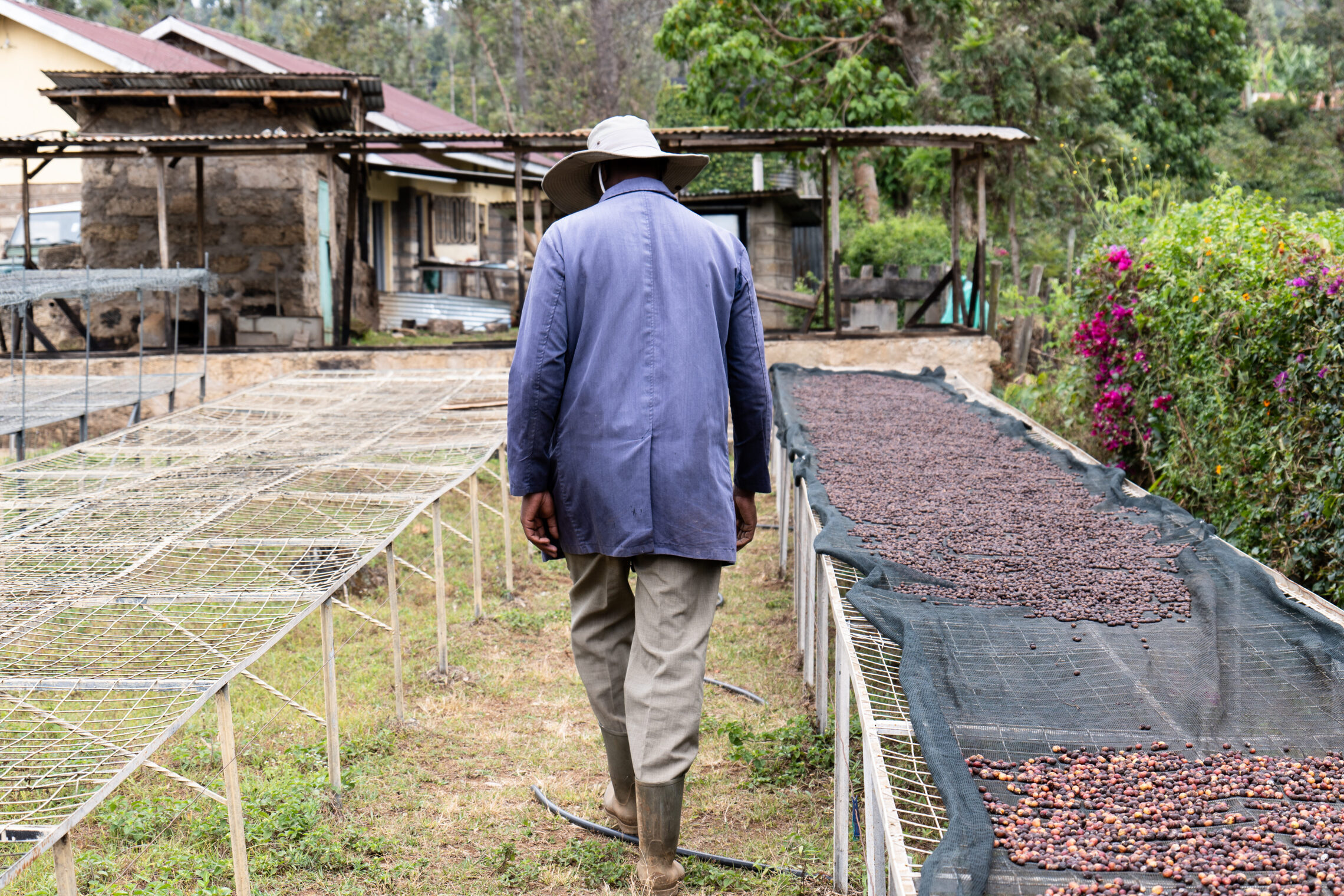
Kenya As a Coffee Growing Country
Kenya is one of the coffee growing countries we focus on: We plan on buying three different coffees from the East African country. Coffees from Kenya are rather popular in the world of specialty coffee and we can hardly get enough of the often very juicy, vibrant yet clean, complex and crisp coffees ourselves. But, of course, it is not possible to describe the flavor profile of a whole country's coffees in just a few words. Not all coffees grown in Kenya, but many of them are sweet, have a pronounced citric acidity, notes of stone fruits, berries, rhubarb, tomatoes at times, paired with floral notes or such of cocoa and sometimes wine-like attributes.
We have wanted to visit Kenya for a while and in the fall of 2022, the time had finally come.
Arriving in Nairobi
I arrived in Nairobi at 3 in the morning after a short red-eye Turkish Airlines flight via Istanbul. I was picked up at the airport and taken to the bed & breakfast on the other side of the city to get a few hours' sleep, before the first coffee-related activity was to begin. Vava Angwenyi, founder of Vava Coffee, had put together a packed schedule for my visit.
For a few days, we went from one place to the next, meeting new people and seeing new places all the time and spending some time in traffic in between. Nairobi is a big city, the road infrastructure is not ideal, there's no metro, buses or trams so it's pretty much impossible to get anywhere without a car. Public transportation consists of countless small, private mini buses, which add to the traffic. Due to this, it often takes an hour or several to get from once side of the city to the other. It may be a little bit better outside the city limits, but going from one place to another still takes time. Therefore, domestic flights are an important means of transport within the country and so are the few train lines there are. The train stations are impressive, they look like airports and so are their security checks. Timing is key when traveling by car within Kenya in order to avoid the rush hours, therefore it makes sense to start early, when the roads aren't that crowded yet.
The city is multifaceted, has many different neighborhoods and there's even a national park with wild animals within the city limits. The population is diverse, too: Kenya has over 40 tribes and most Kenyans belong to one. There are lots of expats, too, tourists, and business people from around the world. During our stay, we also found some interesting restaurants and we felt quite at ease in the city.
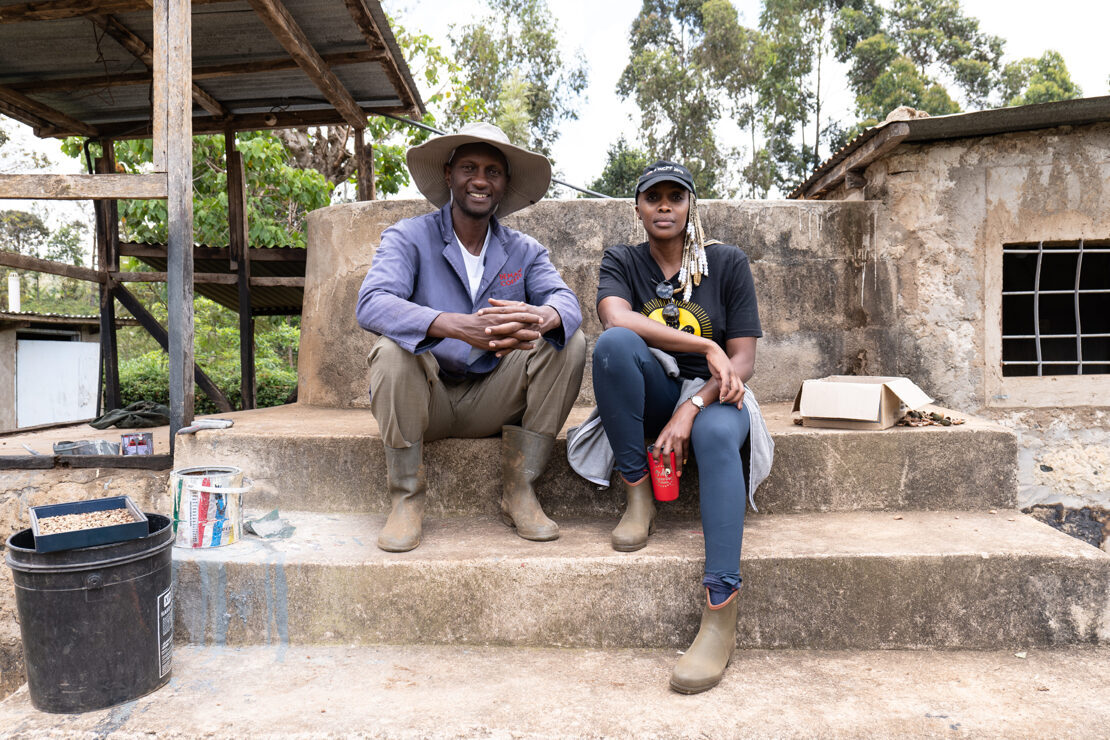
Vava Coffee
When purchasing coffee from Kenya, Vava Coffee, a certified B Corp founded by Vava Angwenyi in 2008, is usually our partner of choice. We purchased all Kenyan coffees in our current offering through Vava. The social enterprise is committed to contributing to better future prospects for both local communities and the coffee industry as a whole. Vava Coffee’s vision is to challenge the status quo and promote positive social and economic disruption within the coffee industry. Vava's passion play an important role in helping many coffee producers earn their income in a more sustainable way.
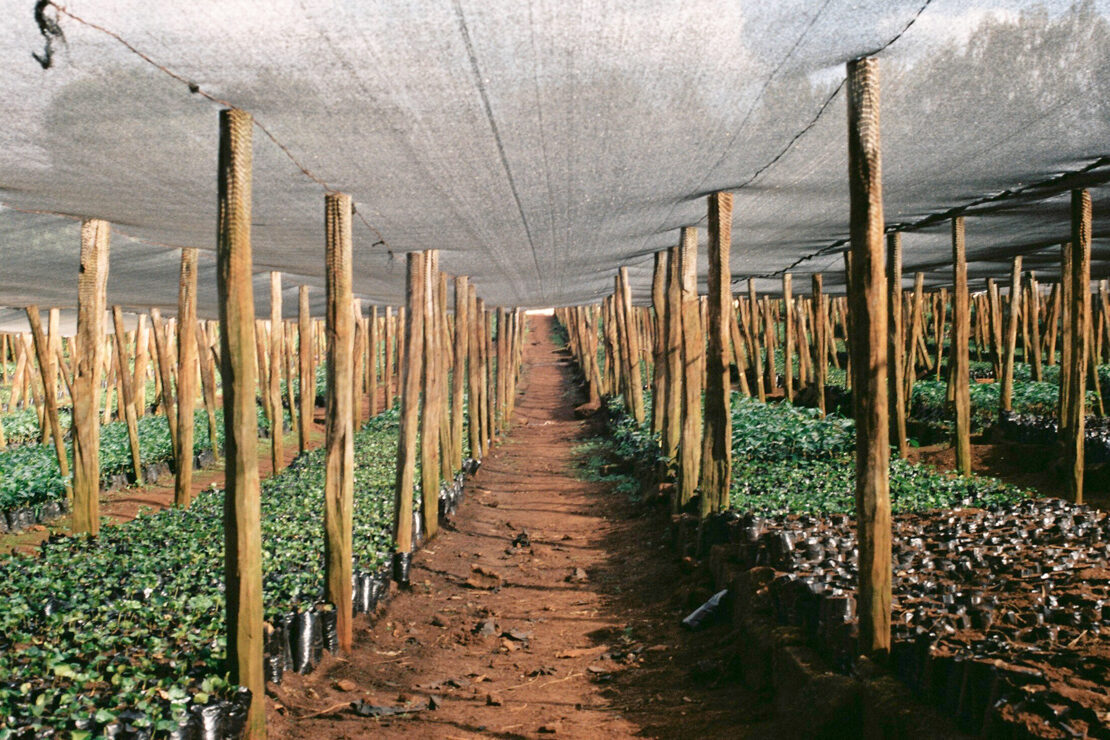
Research Center
The first highlight of the trip was a visit to the Coffee Research Center in Ruiru, situated 20 km (yet 1-2 hours) from Nairobi. Here, coffee varieties resp. cultivars are bred and experimented with – although there is less experimenting than there used to be, which our guide regrets. He has been working here for twenty years. Guiding us through the premises, I feel like this looks rather similar to many smaller coffee farms. Coffee producers can buy seedlings and seeds of various cultivars at the center or at their outposts in more remote areas. One of Kenya's best-known cultivars, which was developed right here in Ruiru, is called Ruiru 11.
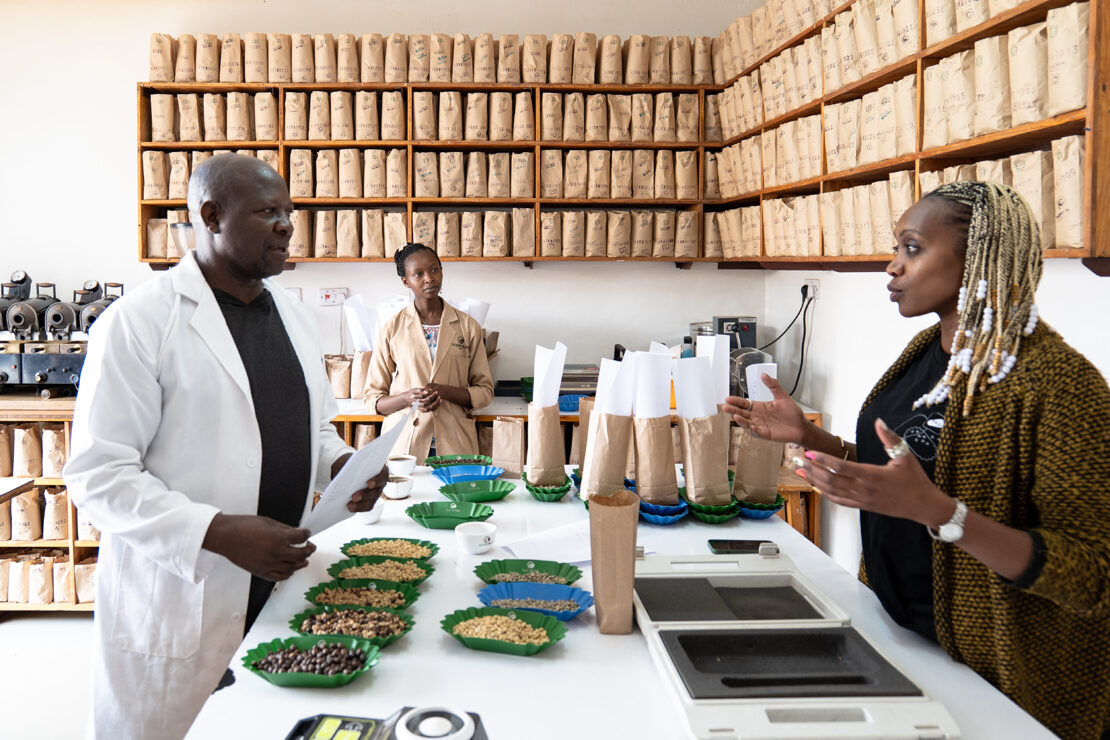
Kenya Coffee
Everyone who works with coffee in Kenya probably knows Kenya Coffee. The company stores some of the coffees that are sold through Vava Coffee. Kenya Coffee put together a cupping with 30-40 coffees for us when we visited. Among my favorites there was one Chepnorio, a coffee we had previously purchased through Vava Coffee and which will be in our offer shortly again. Kenya Coffee's Daniel explained us all the processes and how things work around here. He walked us through every step a coffee takes from the moment it's harvested at the farm until it reaches their premises. After our visit, he joined us for our next destination: KBM.

KBM
Kahawa Bora Millers, or KBM for short, is a well-known dry mill in the region and belongs to the same group Kenya Coffee does. Still, both operate as separate companies and cater to various customers. The name «Kahawa Bora» means «excellent coffee». Here, «parchment coffee» becomes green coffee: The green coffee is milled out of its last, pale-yellowish layer. Vava works with this mill for many different coffees. Two of the coffees we buy are also milled at KBM, where Ernest Mogaka runs the lab. Ernest told us a lot about the current and previous crop, how climate change affects the harvest, about the processes at the mill and some of the coffees they work with.
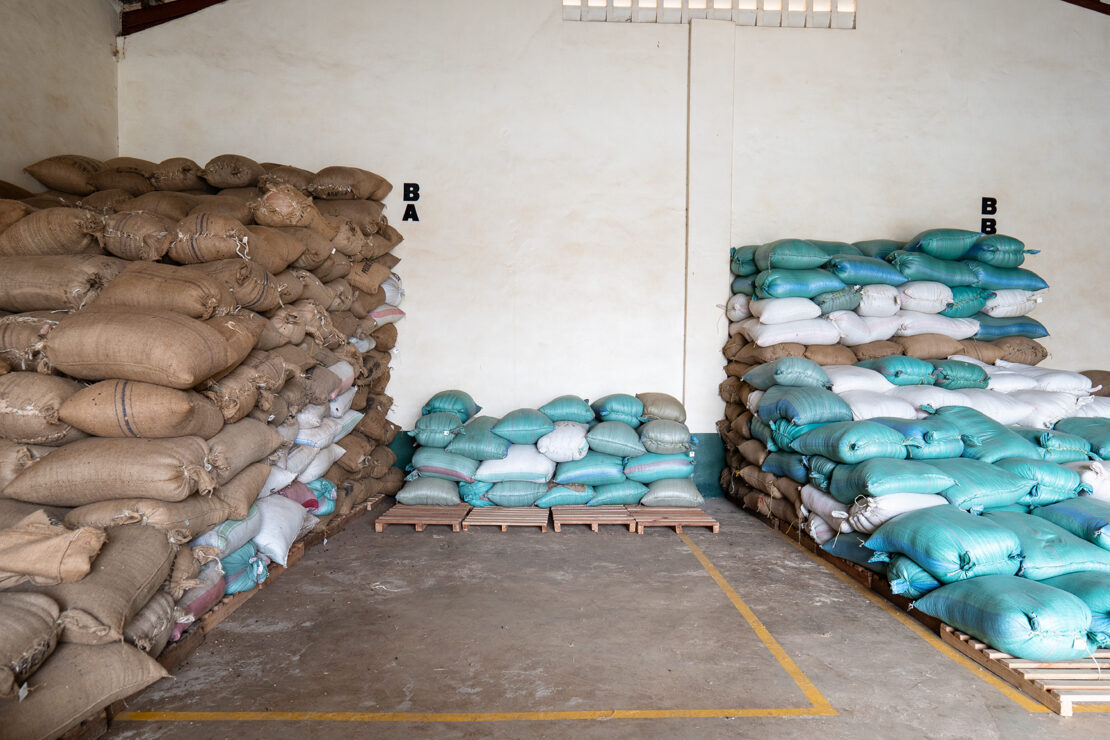
Coffee Exchange
In Kenya, it is rather unusual to buy coffee from a single farm. The majority of all Kenyan coffee producers cultivate a very small area of land, on which they often grow a mere 100-200 coffee trees. Their harvest is usually blended with that of other smallholder farmers and processed together. Since the 30s, Kenyan green coffee is traded at the Nairobi Coffee Exchange, where each coffee is sold to the highest bidder every Tuesday. The system is complex and has its advantages and disadvantages. In recent years, however, green coffee has increasingly been sold outside the auction, though the prices paid still depend on the current prices at the Exchange.
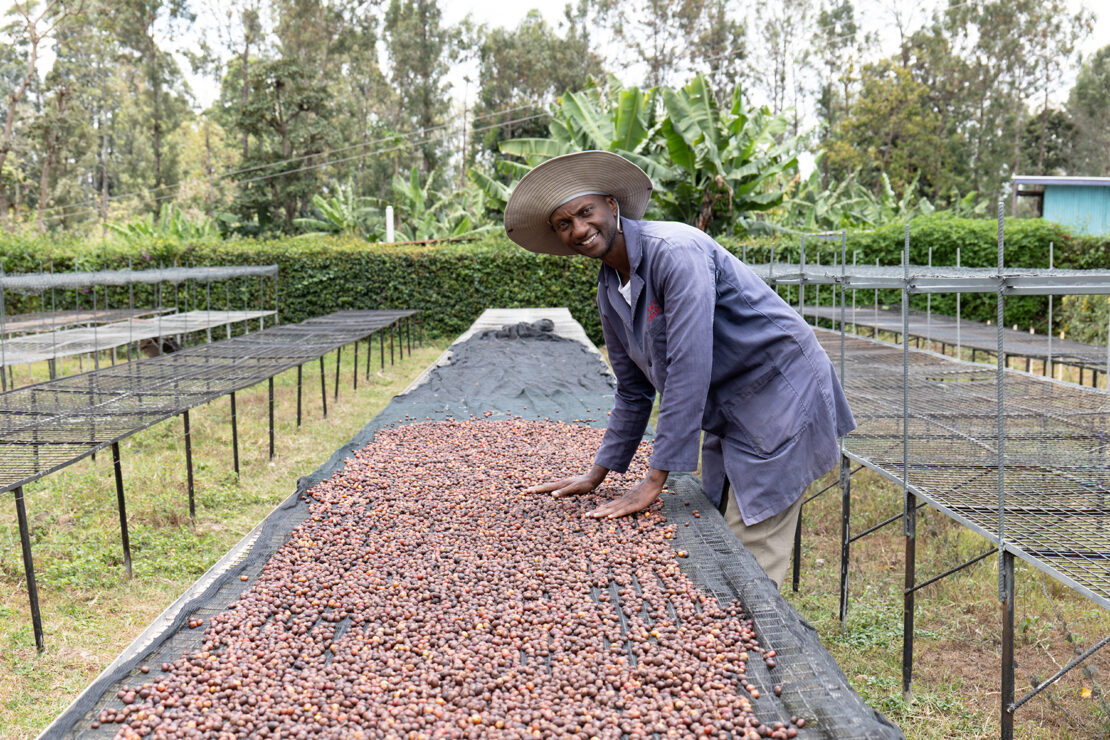
Deman Estate
To escape the traffic we left early in the morning, so we made it to Meru in about 3-4 hours. Upon arriving at Deman Estate in Nkubu Town we were greeted warmly at the gate by Mutai Kinyua, the owner of the farm. Mutai is very charismatic and always up for a joke. He lives in Nairobi with his family, but since he owns a farm in Meru, he goes back-and-forth all the time. Whenever he is not around at Deman Estate, his farm manager makes sure things are running smoothly and the team is happy. About ten workers, most of whom women, are employed almost year-round on Deman Estate and Mutai's second farm, which is situated nearby.
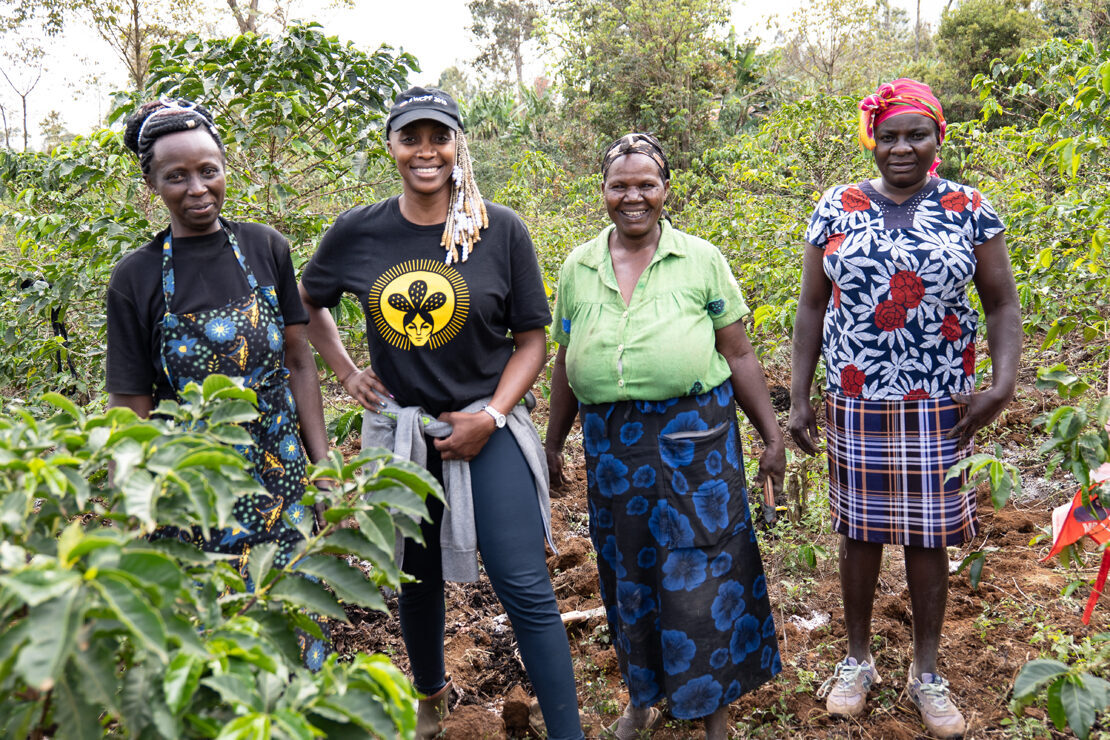
Just like various people at KBM and Kenya Coffee on the day before, Mutai mentioned several times that climate change has made the harvest much more unpredictable and difficult to plan for. A few years ago he could rely on there being a main harvest at the beginning of summer and a secondary harvest in fall. Today, however, everything has shifted and the harvest times vary from one year to the next. This also makes it difficult, sometimes impossible, for Vava to offer the same coffees at the same time of the year – and to export them on time. And of course, it affects our own annual planning, too, which we have to move coffees forward or backward all the time. This is a common problem not only in Kenya, but it's becoming more and more of an issue in most coffee growing countries.
Cultivation & Processing
Deman Estate is, in fact, not just one single farms but spans two farms near each other, whose total area is still rather small. Besides other plants, such as macadamia trees, the farm mainly cultivates two coffee varieties: the aforementioned Ruiru 11 and Batian. Mutai likes these cultivars primarily because the SL varieties, which are also widespread in Kenya and are known for their high cup quality, are too susceptible to disease, which is getting more of an issue due to climate change. Nowadays, cultivating SL varieties often requires an increased use of chemicals such as fungicides, which Mutai prefers not to use. He largely avoids pesticides and fungicides and uses natural techniques and means of pest control whenever possible – and he chooses to cultivate varieties that are more resistant. If, at times, this is not enough to protect the plants, he buys biological agents from a specialized company in Nairobi. For fertilizer, Mutai mainly uses the dried husks of the coffee cherries, the yellow parchment layer of the dried coffee beans, and Minjingu Organic Fertilizer.
The soil at Deman Estate is a mixture of sand and soil rich in nutrients. Mutai plants new coffee trees himself with seeds he buys from the aforementioned Coffee Research Institute, which has an outpost near Deman Estate. After the harvest, the coffee from both farms is sorted by grade. In Kenya, the beans are divided into eight categories depending on their size, for example AA, AB or C. On farm-level, this task is done by putting the coffee onto large sieves, which are then shaken by two people in order for the beans to be agitated and to fall through if they fit the holes. At the mill, a similar process is conducted by machines.

Mutai used to process his coffee using the washed method, which is by far the most common post-harvest processing method in Kenya. One day, a few years ago, Vava suggested that he process a small amount as «naturals». The two had known each other for some time and relatively well, Vava often visits Deman Estate and works closely with Mutai, so he trusted her and took on the experiment. The results tasted great and Mutai was thrilled. Since that first attempt, he has only wanted to make naturals going forward. Not only did the taste convince him, the process also requires much less water than the washed method. Less water means less wastewater, which in some places just goes into the soil and causes massive damage to it, if not treated well.
Naturals & Carbonic Maceration
More recently, Mutai has also started fermenting some of his coffees using the «carbonic maceration» process known from winemaking: After harvesting, the cherries are placed in a tank right away and, without adding any water, they undergo an anaerobic fermentation for 2-3 days. Next, they are laid out on drying beds (raised tables with meshes for table tops) and dried during a few weeks. Mutai also experimented with the «honey process», but he is most interested in naturals with or without carbonic maceration. He intends to have a small roasting machine at his farm in the future to roast samples and coffee for his own use. Therefore, he was very interested in our roastery, how we roast and what machine we use.
We were treated to a small lunch, freshly brewed coffee, and macadamia nuts opened with rocks at Deman Estate. The return trip to Nairobi was no joy, as it took us much longer than coming here due to the traffic
Post-Harvest Process in Kenya
Kenya is known for its washed coffees, which can be extremely juicy, crisp and clear. Notes of red and dark berries, stone fruit such as plum, citrus fruit and floral notes are typical. Below, we briefly summarize the traditional way of post-harvest processing of coffee in Kenya.
- Factories: The freshly harvested coffee cherries are delivered to «collection centers» or directly to the «wet mills» (also «factories», «washing stations»). After basic sorting and inspection for defects, they are weighed there and the producers receive a small deposit – as well as a receipt. They will need this to claim payment later, after the coffee has been sold at the Nairobi Coffee Exchange.
- Depulping: Next, the beans that are within the coffee cherries are separated from the pulp («depulping») and are sorted by density in water channels: The densest beans sink immediately and are categorized as best quality in P1, while those floating on top are considered the lowest quality (P3). Everything in between is labelled as P2.
- Fermentation: The beans are finally removed from the water and placed in fermentation tanks for usually 18-24 hours. They are often washed 2-3 times during this process, with water being added each time, the beans being stirred well, before the water is drained again.
- Washing: After fermentation, the coffee is washed in water channels again and sorted by density once more: lighter beans float off and are dried, heavier ones remain in the water and are washed for up to 24 hours.
- Drying: The beans are now laid out for about 12-20 days – first on a kind of mat, then on drying beds and, often, on a surface of jute or wire mesh to finish. This is usually done outdoors. During the hottest hours of the day and overnight, the beans are therefore covered to protect them from the sun, weather and moisture.
- Milling: Next, the parchment layer of the beans is removed. To do so, the beans are run through a type of grinder that removes the dry, papery, pale-yellow layer: The green green coffee is revealed underneath.
- Grading: Before being ready to be sold, the beans are graded according to their size, e.g. AA for very large beans, which is conducted with yet another grading machine. Finally, samples are taken and packed, which are usually sent to the Coffee Exchange – or directly to export companies such as Vava Coffee.
Nairobi
Despite a full schedule and rather limited time overall, there was still a little time left during this trip for evening activities that had nothing to do with coffee. In Nairobi, Vava had bought tickets for a theater show, which we visited along with a friend of hers. The very modern play was about mental health and illness and was very impressive and well acted. Nairobi felt like a village when visiting this theater: Vava was approached by numerous people with whom she had worked in one way or another or whom she knew otherwise, and Vava's friend Robert also met acquaintances by chance every now and then.
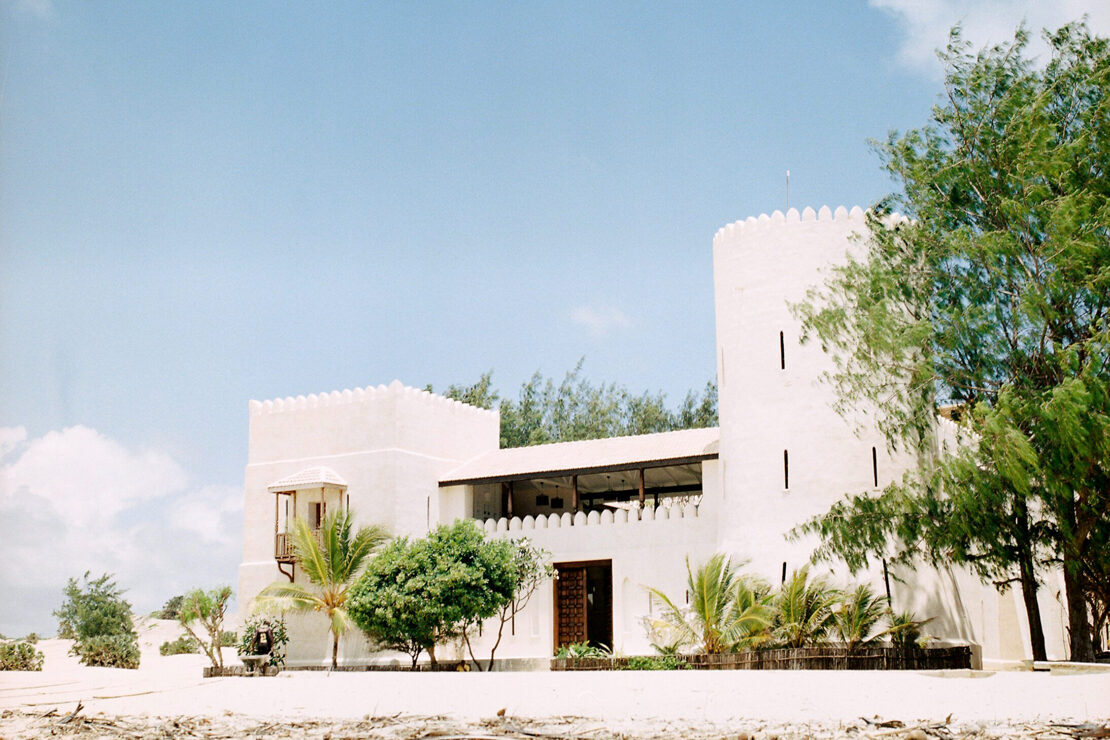
Lamu
Besides the beach, dunes and forest, there are two towns on the island: Shela Town, a beautiful little village with mostly white houses, and Lamu Town, half an hour's walk (or a few minutes by boat) away. Somewhat larger than Shela, Lamu Town is not quite as beautiful, but offers the advantages of being a little bit more urban, e.g. more shops and restaurants. While in Shela the only means of transport are donkeys, you can find lots of motorcycles in Lamu Town, a handful of tuk-tuks (one of them an ambulance), at least one tractor and allegedly there are two cars, too: one for representative purposes or for the governor and another one a donkey ambulance.

La Dulce Toro Café
Vava opened a small coffee school in Lamu Town some time ago, where young adults can attend internationally recognized SCA coffee courses free of charge. The coffee school is part of a project called Gente del Futuro, which started in Colombia – hence the name – and has now continued in Lamu with six participants. Just a few weeks prior to our visit, a café called La Dulce Toro Cafe was also opened in the scope of Gente del Futuro. The café is nicely furnished with a lot of concrete, including a nice concrete counter, yet it fits quite well into the typical, Muslim architecture of Lamu Town, which reminded us of Morocco.
The students of the coffee school also work at the café, some more hours, others less to fit their schedules. There, they can apply newly learned skills first-hand and practice on the job. A glimpse into the creation of La Dulce Toro Café can be found in this beautiful video. The students do not have to pay any admission to attend the school, which is financed by contributions to Gente del Futuro. We also support the project financially with a share of the money from customer contributions in our online store as well as part of the 1% of our annual turnover. Part of Vava Coffee's green coffee sales also goes into the project.
Participating students get the chance to attend free SCA courses at the Foundation and Intermediate levels at Gente del Futuro in the areas of Barista, Brewing (filter coffee) and Sensory. At a later stage, a decision is made together with the students as to whether they want to learn more about an area themselves or whether they want to attend more advanced courses, which can also be financed in part.
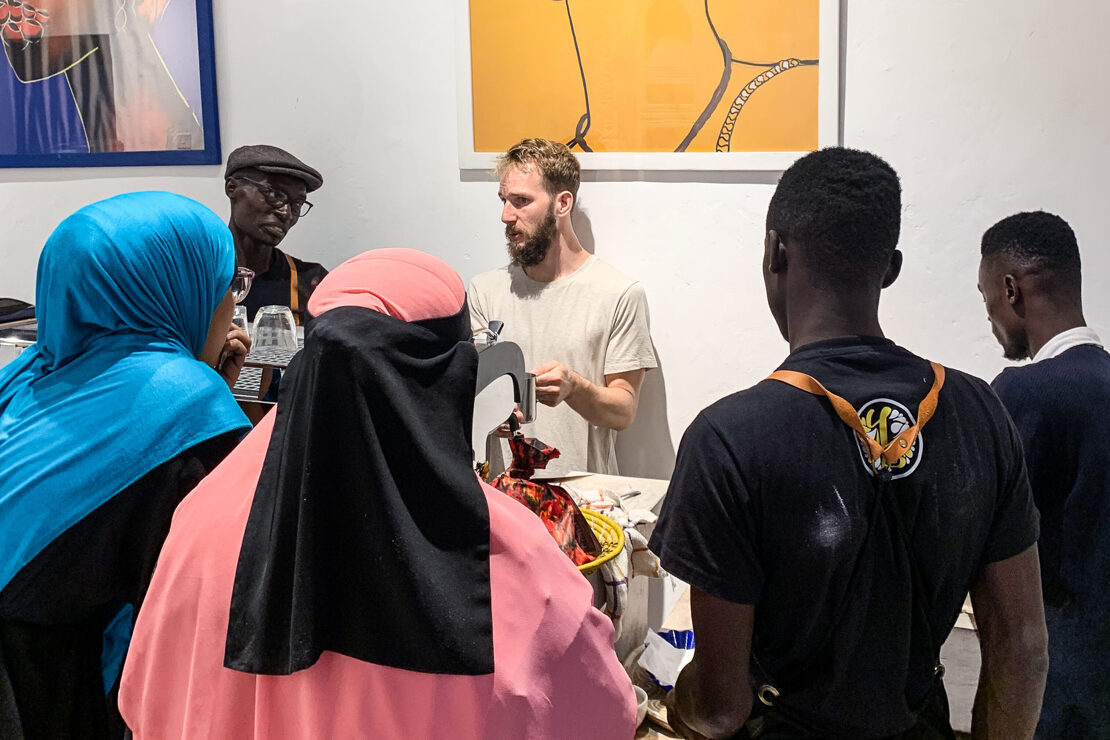
We visited the newly opened café, where I talked to the students and told them about Drip Roasters, our roasting philosophy and our green coffee purchasing. Behind the bar, I shared my own experiences from our café's daily life and tried to answer their questions to my best ability. The students had lots of questions, both about specific steps in a café's workflow and about other things such as what the coffee culture in Switzerland and Europe looks like. Finally, I was given the honor of roasting a few samples with them on an old sample roaster. The whole thing went very quickly and because of the somewhat older machine, the roasting was also rather rudimentary. Finally, the students brewed some coffee for us and after a coffee break we soon went back to the donkeys in Shela Town.
The Coffee
If everything goes according to plan, we buy three Kenyan coffees per year. We are expecting the freshest harvest from Deman Estate to arrive in fall. Two other coffees have only just arrived: We had bought Ndaro-ini, which we roast for espresso, for the first time last year and it has been back in our offering for a few weeks now. A typical «washed» from Nyeri, it is very fruity, juicy and crisp, with hints of milk chocolate. For filter brewing, we have been offering Ngurueri (floral, berries, apricots, apple) for a little while, which had replaced Chepnorio's spot in our offering before. Chepnorio has only just arrived as well, though, and will be available again soon.
Coffee Milk Blood
«Coffee Milk Blood – a Story about us, by us» is a book by Vava Angwenyi with photographs by Portia Maae Hunt. It is a beautiful and thought-provoking photo book about the people in coffee production, colonial history – and present. It is a passion project that Vava and Portia had been working for for a long time. We sell this book just above our purchase price to cover costs. Besides the cost for production and distribution of the book, what's left mostly goes directly to Vava Coffee, part of whose profits always go towards the aforementioned school project Gente del Futuro on Lamu Island.
